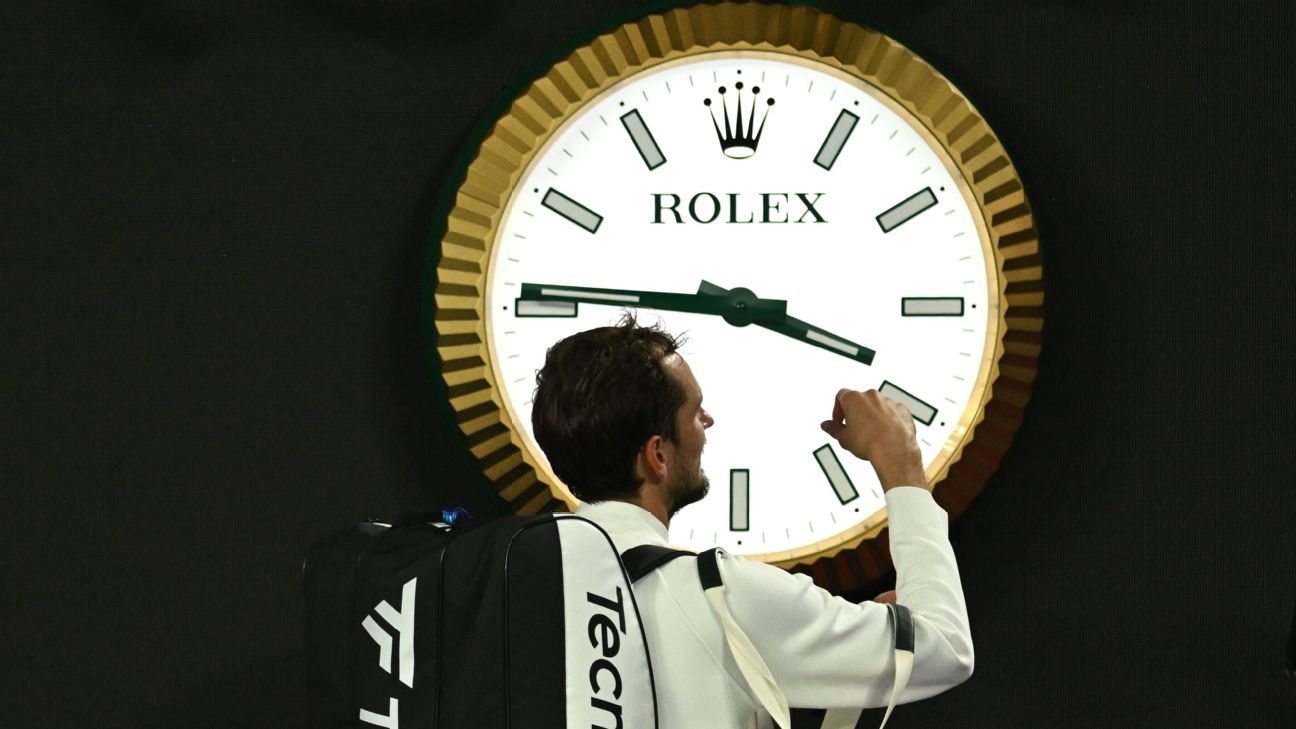Melbourne, AUSTRALIA — It was well after 4 o’clock in the morning when Andy Murray finally trudged off Margaret Court Arena after a grueling five-hour, five-set battle with Thanasi Kokkinakis at last year’s Australian Open.
Instead of celebrating the epic contest for what it was, public discourse immediately turned to what Murray described as the “farce” of being forced to begin his match well after 11 p.m.
“It’s not beneficial for [ballkids],” he said after the win. “It’s not beneficial for the umpires, the officials. I don’t think it’s amazing for the fans. It’s not good for the players.
“We talk about it all the time. It’s been spoken about for years. When you start the night matches late and have conditions like that, these things are going to happen.”
While Australian Open tournament director Craig Tiley at the time said there wouldn’t be any immediate changes to the scheduling, things were tweaked for this year’s tournament.
In an effort to alleviate the backlog of first-round matches, an extra day of play was added to the 2024 schedule — on the Sunday prior to the usual Monday start. Having three days for the 128 first-round matches was supposed to be a small change to help ensure fewer late nights at the Australian Open.
“[We] are excited to deliver a solution to minimize late finishes while continuing to provide a fair and equitable schedule on the stadium courts,” Tiley said at the time.
But the idea failed immediately.
On the first day of the tournament, world No. 2 Aryna Sabalenka‘s first serve was sent down at 11:41pm, with most of the Rod Laver Arena crowd already gone following Novak Djokovic‘s four-set epic win over Croatian teen Dino Prizmic.
And Thursday night there was a sense of deja vu around Melbourne Park when, like Murray and Kokkinakis last year, men’s world No. 3 Daniil Medvedev‘s second-round match didn’t get underway until 11:16 p.m. The reason? Elena Rybakina and Anna Blinkova‘s clash went the distance — featuring the longest tie-break in singles Slam history to boot. That was after they started an hour after the scheduled 7 p.m., due to the late finish of the final day session match.
It’s late! 🤣 pic.twitter.com/Q4mgiLxNhE
— Daniil Medvedev (@DaniilMedwed) January 18, 2024
Of course, there’s nothing that can predict that consecutive matches prior don’t go the whole nine yards, putting pressure on a schedule, but with both Sabalenka and Medvedev forced to wait until minutes before midnight to even begin their matches in just the first two rounds, clearly something is still not working.
“What is it, 3:40 in the morning?” Medvedev said after his five-set tussle with Emil Ruusuvuori finished close to 4 a.m. “Honestly guys, I would not be here. Thanks for staying. If I would be a tennis fan and I would come, I would be at 1 am, ‘Let’s go home, we’re going to catch the end of the match on TV,’ watch 30 minutes and then go to bed.”
On Jan. 9, just prior to the Australian Open starting, the ATP and WTA announced a one-year trial of new scheduling rules for their events, which would further reduce the likelihood of late starts. As Grand Slams are not ATP or WTA-run events, the Australian Open was not required to abide by the directive.
The new rules dictate that no play is to begin after 11 p.m. unless approved by a supervisor; matches not on court by 10:30 p.m. to be moved to an alternate court by no later than 11 p.m.; and for night sessions to begin no later than 7:30 p.m., with a recommendation for 6:30 p.m.
On that first night of the Australian Open, Djokovic took four hours and one minute to earn his place in the second round, but because Rod Laver Arena night sessions aren’t scheduled to start until 7 p.m., it meant Sabalenka couldn’t even warm up before 11 p.m. — against the rules if the tournament was run by the WTA.
No one should be playing tennis at 330am. This is looney tunes.
— John Isner (@JohnIsner) January 18, 2024
Adding insult to injury on that first night, the showpiece court at Melbourne Park had been sitting dormant since the midafternoon after two routine day session matches, waiting for 7 p.m. to roll around — only for players to then be introduced, warm up and begin play around 20 minutes after that.
The extra day for the first round was a novel idea in theory, but there are more logical steps organizers of the Australian Open could take to ensure the world’s best tennis players aren’t playing so late into the night.
Bringing forward the start time at the stadiums by one hour would allow the night session to begin earlier (of course, so long as the day session doesn’t run well over) — at the WTA and ATP’s preferred time of 6:30 p.m.
In effect, the only thing the extra day has benefited is the Australian Open’s bottom line. A first-day record 87,705 spectators poured through the gates on the opening Sunday — a number which all but ensures yet another record total attendance for one of the most well-supported sporting events in the world.
ESPN commentator John McEnroe predicted as much before the tournament.
“First of all, it’s a money grab as far as I’m concerned,” he said of the extra day. “They just found another way to make some money. I don’t agree with it.”
